- Home
- Mary Higgins Clark
Nighttime Is My Time
Nighttime Is My Time Read online
Acclaim for THE QUEEN OF SUSPENSE
#1 New York Times Bestselling Author
MARY HIGGINS CLARK
THE SECOND TIME AROUND
“Clark keeps the chase lively throughout.”
—People
“[Clark] knows how to spin an intriguing tale . . . she’s created a convincing heroine in Carley.”
—Booklist
“There’s something special about Clark’s thrillers. . . . Grace, charm, and solid storytelling.”
—Publishers Weekly
DADDY’S LITTLE GIRL
“Clark’s best journalism novel.”
—Atlanta Constitution
“Her best in years . . . a tightly woven, emotionally potent tale of suspense and revenge. . . . With its textured plot, well-sketched secondary characters, strong pacing, and appealing heroine, this is Clark at her most winning.”
—Publishers Weekly
“Few stories of obsession will grab readers quite like this one.”
—Ottowa Citizen
“A fast and fascinating read.”
—Knoxville News-Sentinel (TN)
“The plot is classic Clark, except the author tells her story from a first-person perspective. She pulls it off well.”
—Star Ledger (NJ)
ON THE STREET WHERE YOU LIVE
“Is a reincarnated serial killer at work in a New Jersey resort town more than a century after he first drew blood? That’s the catchy premise that supports Clark’s 24th book. . . . [A] plot-driven novel.”
—Publishers Weekly
“A suspenseful page-turner that will delight her many fans.”
—Booklist
“The cleverly complex plot gallops along at a great clip, the little background details are au courant, and the identities of both murderers come as an enjoyable surprise. On the Street Where You Live just may be Clark’s best in years.”
—Amazon.com
BEFORE I SAY GOOD-BYE
“Mary Higgins Clark knows what she’s doing. . . . This savvy author always comes up with something unexpected. . . . A hold-your-breath ending.”
—The New York Times Book Review
“Romantic suspense has no more reliable champion than Mary Higgins Clark. Her characters are . . . breezy and fun, and so is this confection of a book.”
—Publishers Weekly
“For someone who loves plot, Mary Higgins Clark’s Before I Say Good-Bye should be like manna from heaven. . . . [The] ‘Queen of Suspense’ clearly knows what her readers want. Here she provides it, in spades.”
—Los Angeles Times
“A smooth and easy read.”
—New York Post
“The storytelling skills of the newest grandmaster of mystery writing have never been better.”
—The Hartford Courant (CT)
“Clark holds the reins the whole way through this tale of mischief and secrets, allowing us to unwind her labyrinth of hidden clues only as she wants them to unfold.”
—The Christian Science Monitor
“Characters so interesting the reader can identify with them in an instant.”
—Lexington Herald-Leader (KY)
Thank you for purchasing this Simon & Schuster eBook.
* * *
Join our mailing list and get updates on new releases, deals, bonus content and other great books from Simon & Schuster.
CLICK HERE TO SIGN UP
or visit us online to sign up at
eBookNews.SimonandSchuster.com
Contents
Acknowledgments
Chapter 1
Chapter 2
Chapter 3
Chapter 4
Chapter 5
Chapter 6
Chapter 7
Chapter 8
Chapter 9
Chapter 10
Chapter 11
Chapter 12
Chapter 13
Chapter 14
Chapter 15
Chapter 16
Chapter 17
Chapter 18
Chapter 19
Chapter 20
Chapter 21
Chapter 22
Chapter 23
Chapter 24
Chapter 25
Chapter 26
Chapter 27
Chapter 28
Chapter 29
Chapter 30
Chapter 31
Chapter 32
Chapter 33
Chapter 34
Chapter 35
Chapter 36
Chapter 37
Chapter 38
Chapter 39
Chapter 40
Chapter 41
Chapter 42
Chapter 43
Chapter 44
Chapter 45
Chapter 46
Chapter 47
Chapter 48
Chapter 49
Chapter 50
Chapter 51
Chapter 52
Chapter 53
Chapter 54
Chapter 55
Chapter 56
Chapter 57
Chapter 58
Chapter 59
Chapter 60
Chapter 61
Chapter 62
Chapter 63
Chapter 64
Chapter 65
Chapter 66
Chapter 67
Chapter 68
Chapter 69
Chapter 70
Chapter 71
Chapter 72
Chapter 73
Chapter 74
Chapter 75
Chapter 76
Chapter 77
Chapter 78
Chapter 79
Chapter 80
Chapter 81
Chapter 82
Chapter 83
Chapter 84
Chapter 85
Chapter 86
Chapter 87
Chapter 88
Chapter 89
Chapter 90
Chapter 91
Chapter 92
Chapter 93
Chapter 94
Chapter 95
Chapter 96
Chapter 97
Epilogue
‘No Place Like Home’ Excerpt
About Mary Higgins Clark
For Vincent Viola, a proud West Point graduate, and his lovely wife, Theresa, with affection and friendship.
ACKNOWLEDGMENTS
I am frequently asked if the longer I write, the easier it gets. I wish that were true, but it simply isn’t. Each story is a new challenge, a new landscape to fill with characters and events. That is why I am so grateful to those same people who are always there for me, especially when I’m beginning to wonder if I really can tell the tale the way I hope to tell it.
Michael Korda has been my editor ever since my first suspense fiction novel thirty years ago. He has been friend, mentor, and editor par excellence for three decades. Senior editor Chuck Adams has been part of our team for the last dozen years. I am grateful to both of them for everything they do to guide this writer along the way.
My literary agents, Eugene Winick and Sam Pinkus, are true friends, good critics, and great supporters. I love them. Dr. Ina Winick brings her psychological expertise to assist me on the workings of the human mind.
Lisl Cade, my publicist and dear friend, is always there for me.
Many thanks to Michael Goldstein, Esq., and Meyer Last, Esq., for their valuable assistance in answering my queries about adoption law and procedure.
Again and always a tip of the hat to Associate Director of Copyediting, Gypsy da Silva, and her team: Rose Ann Ferrick, Anthony Newfield, Bill Molesky, and Joshua Cohen, and to Detective Richard Murphy and Sgt. Steven Marron, Ret., for their cont
inuing support and guidance.
Agnes Newton, Nadine Petry, and Irene Clark are always in my corner on my literary journeys.
The special joy is that after the story is told, I celebrate with my nearest and dearest, the children and grandchildren and, of course, “Himself,” my marvelous husband, John Conheeney.
And now I hope you, my valued readers, enjoy the goings-on at a deadly twentieth class reunion in the beautiful Hudson Valley.
The definition of an owl had always pleased him: A night bird of prey . . . sharp talons and soft plumage which permits noiseless flight . . . applied figuratively to a person of nocturnal habits. “I am The Owl,” he would whisper to himself after he had selected his prey, “and nighttime is my time.”
1
It was the third time in a month he had come to Los Angeles to observe her daily activities. “I know your comings and goings,” he whispered as he waited in the pool house. It was one minute of seven. The morning sun was filtering through the trees, causing the waterfall that spilled into the pool to sparkle and shimmer.
He wondered if Alison could sense that she had only one minute more of life on earth. Did she have an uneasy feeling, perhaps a subconscious urge to skip her swim this morning? Even if she did, it wouldn’t do her any good. It was too late.
The sliding glass door opened, and she stepped onto the patio. Thirty-eight years old, she was infinitely more attractive than she had been twenty years ago. Her body, tanned and sleek, looked good in the bikini. Her hair, now honey blond, framed and softened her sharp chin.
She tossed the towel she was carrying onto a lounge chair. The blinding anger that had been simmering inside him escalated into rage, but then, just as quickly, was replaced by the satisfaction of knowing what he was about to do. He had seen an interview in which a daredevil stunt diver swore that the moment before he began to dive, knowing that he was risking his life, was an indescribable thrill, a sensation he needed to repeat over and over again.
For me it’s different, he thought. The moment before I reveal myself to them is what gives me the thrill. I know they’re going to die, and when they see me, they know, too. They understand what I am going to do to them.
Alison stepped onto the diving board and stretched. He watched as she bounced softly, testing the board, then positioned her arms in front of her.
He opened the door of the pool house just as her feet lifted from the board. He wanted her to see him when she was in midair. Just before she hit the water. He wanted her to understand how vulnerable she was.
In that split second, their eyes locked. He caught her expression as she plunged into the water. She was terrified, aware that she was incapable of flight.
He was in the pool before she had surfaced. He hugged her against his chest, laughing as she flailed about, kicking her feet. How foolish she was. She should simply accept the inevitable. “You’re going to die,” he whispered, his voice calm, even.
Her hair was in his face, blinding him. Impatiently he shook it away. He didn’t want to be distracted from the pleasure of feeling her struggle.
The end was coming. In her craving for breath, she had opened her mouth and was gulping water. He felt her final frantic effort to break away from him, then the hopelessly feeble tremors as her body began to go limp. He pressed her close, wishing he could read her mind. Was she praying? Was she begging God to save her? Was she seeing the light that people who have experienced a near-death event claim to have seen?
He waited a full three minutes before he released her. With a satisfied smile he watched as her body sank to the bottom of the pool.
It was five minutes after seven when he climbed out of the pool, pulled on a sweatshirt, shorts, sneakers, a cap, and dark glasses. He had already chosen the spot where he would leave the silent reminder of his visit, the calling card that everybody always missed.
At six minutes past seven he began to jog down the quiet street, another early morning fitness buff in a city of fitness buffs.
2
Sam Deegan had not intended to open the file on Karen Sommers that afternoon. He’d been fishing through the bottom drawer of his desk in search of the packet of cold pills he vaguely remembered having stashed there. When his fingers touched the well-worn and troublingly familiar folder, he hesitated and then, with a grimace, pulled it out and opened it. When he looked at the date on the first page, he realized that he had been subconsciously intending to find it. The anniversary of Karen Sommers’ death was Columbus Day, twenty years ago next week.
The file ought to have been kept with the other unsolved cases, but three successive Orange County prosecutors had indulged his need to keep it at his fingertips. Twenty years ago Sam had been the first detective to arrive in response to the frantic phone call from a woman screaming that her daughter had been stabbed.
Minutes later, when he had arrived at the house on Mountain Road in Cornwall-on-Hudson, he had found the victim’s bedroom crowded with shocked and horrified onlookers. One neighbor was bent over the bed uselessly trying to administer mouth-to-mouth resuscitation. Others were attempting to pull the hysterical parents away from the heartbreaking sight of their daughter’s brutalized body.
Karen Sommers’ shoulder-length hair was spilling onto the pillow. When he yanked the would-be rescuer back, Sam could see the vicious stab wounds in Karen’s chest and heart that must have caused instant death and had drenched the sheets with her blood.
He remembered his initial thought had been that the young woman probably never even heard her attacker enter her room. She probably never woke up, he reflected, shaking his head as he opened the folder. The mother’s screams had attracted not only neighbors but a landscaper and delivery man who were on the premises next door. The result was a thoroughly compromised crime scene.
There had been no signs of forced entry. Nothing was missing. Karen Sommers had been a twenty-two-year-old first-year medical student who surprised her parents by coming home for an overnight visit. The logical suspect was her ex-boyfriend, Cyrus Lindstrom, a third-year law student at Columbia. He admitted that Karen had told him she wanted both of them to start seeing other people, but he also insisted that he had agreed it was a good idea because neither one of them was ready for a serious commitment. His alibi—that he had been asleep in the apartment he shared with three other law students—was verified, although all three roommates admitted they had gone to bed by midnight and therefore did not know whether or not Lindstrom had left the apartment after that time. Karen’s death was estimated to have taken place between two and three in the morning.
Lindstrom had visited the Sommers house a few times. He knew a spare key was kept under the fake rock near the back door. He knew that Karen’s room was the first one to the right off the back staircase. But that wasn’t proof that in the middle of the night he had driven fifty miles from Amsterdam Avenue and 104th Street in Manhattan to Cornwall-on-Hudson and killed her.
“A person of interest”—that’s what we call people like Lindstrom today, Sam reflected. I always thought that guy was as guilty as sin. I could never understand why the Sommers family stood by him. God, you’d have thought they were defending their own son.
Impatiently, Sam dropped the file on his desk, got up, and walked to the window. From his perspective he could see the parking lot, and he remembered the time a prisoner on trial for murder had overpowered a guard, dropped out the window of the courthouse, raced across the lot, mugged a guy getting into his car, and driven away.
We got him in twenty minutes, Sam thought. So why in twenty years can’t I find the animal who killed Karen Sommers? For my money, it’s still Lindstrom.
Lindstrom was now a high-powered New York criminal attorney. He’s a master at getting the murdering bums off, Sam thought. Appropriate, since he’s one of them.
He shrugged. It was a rotten day, rainy and unusually cold for early October. I used to love this job, he thought, but it’s not the same anymore. I’m ready to retire. I’m fifty-eight
years old; I’ve been at police work most of my life. I should just take the pension and run. Lose a little weight. Visit the kids and spend more time with the grandkids. Before you know it, they’ll be in college.
He had a vague sense of a headache brewing as he ran a hand through his thinning hair. Kate used to tell me to stop doing that, he thought. She said I was weakening the roots.
With a half smile at his late wife’s unscientific analysis of his approaching baldness, he went back to his desk and stared down again at the file marked “Karen Sommers.”
He still regularly visited Karen’s mother, Alice, who had moved to a condominium in town. He knew it comforted her to feel that they were still trying to find the person who had taken her daughter’s life, but it was more than that. Sam had a feeling that someday Alice would mention something that had never occurred to her as being important, something that would be the first step toward finding out who had gone into Karen’s room that night.
That’s what has kept me in this job the last couple of years, he thought. I wanted so much to solve this case, but I can’t wait any longer.
He went back to his desk, opened the bottom drawer, and then hesitated. He should let it go. It was time to put this folder with the other unsolved cases in the general file. He’d done his best. For the first twelve years after the murder, he’d gone to the cemetery on the anniversary. He’d stayed there all day, hidden behind a mausoleum, watching Karen’s grave. He’d even wired the tombstone to catch anything a visitor might say. There’d been some cases where killers had been caught because they’d paid an anniversary visit to their victim’s grave, even talking about the crime to their victim.
The only people who ever came to Karen’s grave on the anniversary were her parents, and it had been a gutwrenching intrusion of privacy to hear them reminisce about their only daughter. He’d given up going there eight years ago, after Michael Sommers died and Alice came alone to stand at the grave where her husband and daughter were now resting side by side. That was when he walked away, not wanting to be a witness to her grief. He’d never gone back.
Sam stood up and put the Karen Sommers file under his arm, his decision made. He wouldn’t look at it again. And next week, on the twentieth anniversary of Karen’s death, he’d put in his retirement papers.

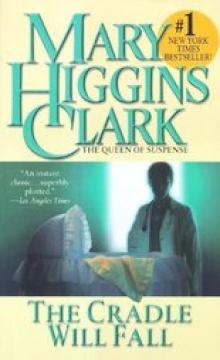 Clark, Mary Higgins 03 - The Cradle Will Fall
Clark, Mary Higgins 03 - The Cradle Will Fall Moonlight Becomes You
Moonlight Becomes You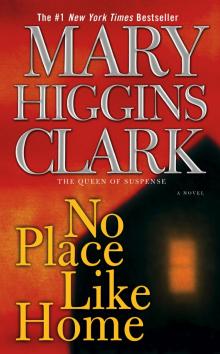 No Place Like Home
No Place Like Home I've Got My Eyes on You
I've Got My Eyes on You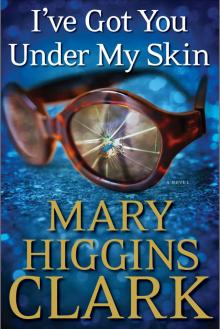 I've Got You Under My Skin
I've Got You Under My Skin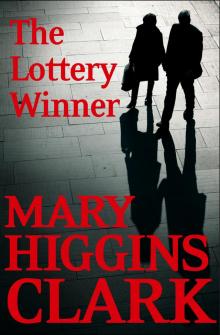 The Lottery Winner
The Lottery Winner As Time Goes By
As Time Goes By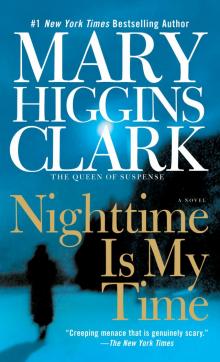 Nighttime Is My Time
Nighttime Is My Time Where Are the Children?
Where Are the Children?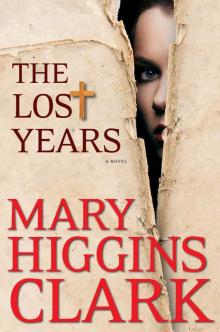 The Lost Years
The Lost Years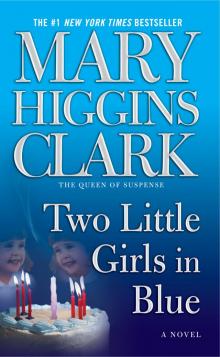 Two Little Girls in Blue
Two Little Girls in Blue Mount Vernon Love Story: A Novel of George and Martha Washington
Mount Vernon Love Story: A Novel of George and Martha Washington All by Myself, Alone
All by Myself, Alone The Melody Lingers On
The Melody Lingers On Just Take My Heart
Just Take My Heart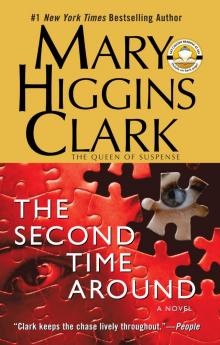 The Second Time Around
The Second Time Around A Cry in the Night
A Cry in the Night Deck the Halls
Deck the Halls We'll Meet Again
We'll Meet Again Before I Say Goodbye
Before I Say Goodbye Piece of My Heart
Piece of My Heart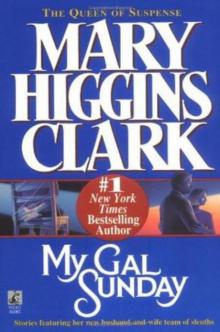 My Gal Sunday
My Gal Sunday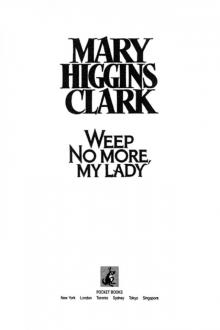 Weep No More, My Lady
Weep No More, My Lady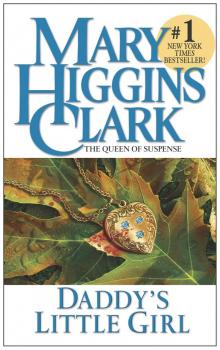 Daddy's Little Girl
Daddy's Little Girl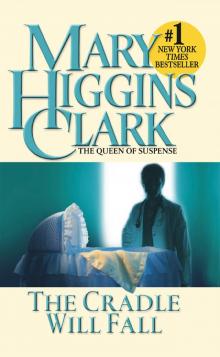 The Cradle Will Fall
The Cradle Will Fall Manhattan Mayhem: New Crime Stories From Mystery Writers of America
Manhattan Mayhem: New Crime Stories From Mystery Writers of America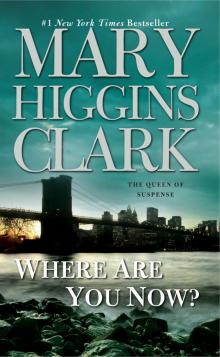 Where Are You Now?
Where Are You Now? Loves Music, Loves to Dance
Loves Music, Loves to Dance While My Pretty One Sleeps
While My Pretty One Sleeps Pretend You Don't See Her
Pretend You Don't See Her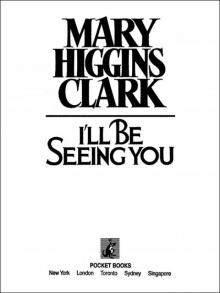 I'll Be Seeing You
I'll Be Seeing You Let Me Call You Sweetheart
Let Me Call You Sweetheart Remember Me
Remember Me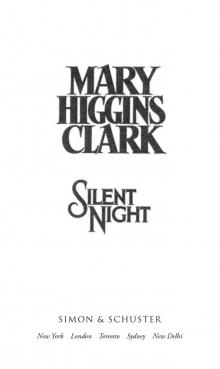 Silent Night
Silent Night Kitchen Privileges
Kitchen Privileges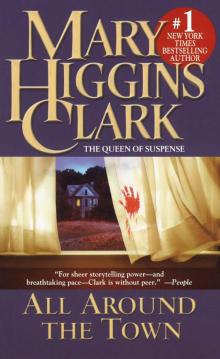 All Around the Town
All Around the Town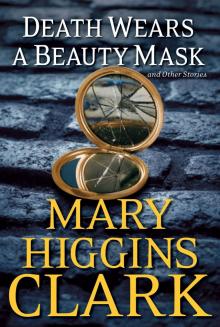 Death Wears a Beauty Mask and Other Stories
Death Wears a Beauty Mask and Other Stories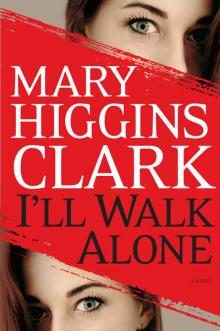 I'll Walk Alone
I'll Walk Alone The Shadow of Your Smile
The Shadow of Your Smile Kiss the Girls and Make Them Cry
Kiss the Girls and Make Them Cry Manhattan Mayhem
Manhattan Mayhem Deck the Halls (Holiday Classics)
Deck the Halls (Holiday Classics)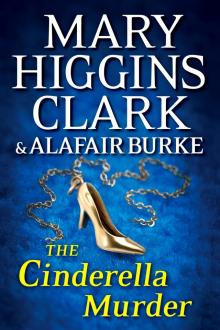 The Cinderella Murder
The Cinderella Murder All Dressed in White
All Dressed in White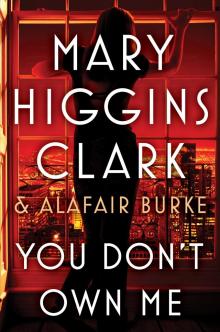 You Don't Own Me
You Don't Own Me The Christmas Thief
The Christmas Thief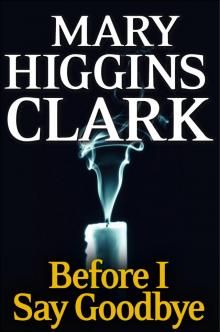 Before I Say Good-Bye
Before I Say Good-Bye Dashing Through the Snow
Dashing Through the Snow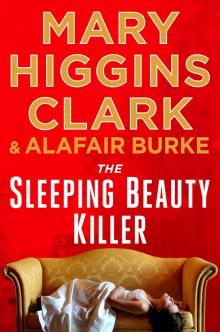 The Sleeping Beauty Killer
The Sleeping Beauty Killer Mount Vernon Love Story
Mount Vernon Love Story Santa Cruise
Santa Cruise I 've Heard That Song Before
I 've Heard That Song Before